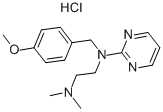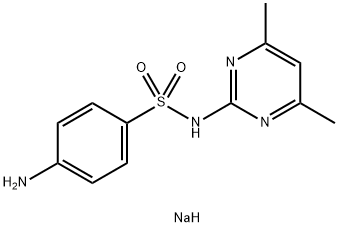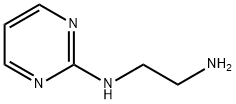thonzylamine hydrochloride
- CAS NO.:63-56-9
- Empirical Formula: C16H22N4O.ClH
- Molecular Weight: 322.84
- MDL number: MFCD00058195
- EINECS: 2005613
- SAFETY DATA SHEET (SDS)
- Update Date: 2024-11-19 23:02:33

What is thonzylamine hydrochloride?
Chemical properties
White, crystalline powder; faint odor. Very soluble in water; freely soluble in alcohol and chloroform; practically insoluble in ether and benzene; pH 5.0–6.0 (2% solution).
Originator
Neohetramine,Warner Lambert,US,1948
The Uses of thonzylamine hydrochloride
Medicine (antihistamine).
Definition
ChEBI: Thonzylamine hydrochloride is a member of methoxybenzenes.
Manufacturing Process
54 g of 2-(p-methoxybenzyl)aminopyrimidine and 12.0 g of sodamide were suspended in 250 cc of toluene and were refluxed for 31 hours. To the thus prepared sodium salt of 2-(p-methoxybenzyl)aminopyrimidine, 28.1 g of dimethylaminoethyl chloride were added and refluxed under continuous stirring for 26 hours. After cooling, the reaction mixture was extracted with dilute hydrochloric acid at about pH 5.0, removing the product thus formed containing only very little of the unreacted 2-(p_x0002_methoxybenzyl)aminopyrimidine. This solution was then made alkaline to liberate the free base of the product, which was extracted with ether. The ether solution was evaporated and the residue vacuum distilled. The product, 2-(p-methoxybenzyl-dimethylaminoethyl)aminopyrimidine forms an oily liquid, boiling point 185°C to 187°C at 2.2 mm.
Therapeutic Function
Antihistaminic
General Description
White crystalline powder with a faint odor . pH: 5.1-5.7 (2 % aqueous solution).
General Description
Thonzylamine hydrochloride,2-[[2-(dimethylamino)-ethyl](p-methoxybenzyl)amino]pyrimidine hydrochloride, is a white crystallinepowder soluble in water (1:1), in alcohol (1:6), and in chloroform(1:4). A 2% aqueous solution has a pH of 5.5. It is similar in activity to tripelennamine but is claimed to be lesstoxic. The usual dose is 50 mg taken up to 4 times daily. Itis available in certain combination products.
Air & Water Reactions
Water soluble.
Reactivity Profile
thonzylamine hydrochloride behaves as a weak organic acid. Materials in this group are generally soluble in water. The resulting solutions contain moderate concentrations of hydrogen ions and have pH's of less than 7.0. They react as acids to neutralize bases. These neutralizations generate heat, but less or far less than is generated by neutralization of inorganic acids, inorganic oxoacids, and carboxylic acid. They usually do not react as either oxidizing agents or reducing agents but such behavior is not impossible.
Health Hazard
SYMPTOMS: Symptoms of exposure to thonzylamine hydrochloride may include drowsiness, lethargy, fatigue, hypnosis, coma, vertigo, ataxia, tinnitus, blurred vision, tremors, anxiety, insomnia, excitement, hallucinations, delirium, convulsions, dry mouth, anorexia, nausea, vomiting, abdominal distress, constipation, diarrhea, central nervous system depression, gastrointestinal reactions, respiratory arrest and circulatory collapse.
Fire Hazard
Flash point data for thonzylamine hydrochloride are not available. thonzylamine hydrochloride is probably combustible.
Properties of thonzylamine hydrochloride
| Melting point: | 173-176° |
| Boiling point: | bp2.2 185-187° |
| Density | 1.2562 (rough estimate) |
| refractive index | 1.5800 (estimate) |
| Stability: | Stable. Incompatible with strong oxidizing agents. |
| EPA Substance Registry System | Thonzylamine hydrochloride (63-56-9) |
Safety information for thonzylamine hydrochloride
Computed Descriptors for thonzylamine hydrochloride
New Products
4-AMINO-TETRAHYDRO-PYRAN-4-CARBOXYLIC ACID HCL 4-(Dimethylamino)tetrahydro-2H-pyran-4-carbonitrile 4-Aminotetrahydropyran-4-carbonitrile Hydrochloride (R)-3-Aminobutanenitrile Hydrochloride 3-((Dimethylamino)methyl)-5-methylhexan-2-one oxalate 1,4-Dioxa-8-azaspiro[4.5]decane 5-Bromo-2-nitropyridine Nimesulide BP Aceclofenac IP/BP/EP Diclofenac Sodium IP/BP/EP/USP Mefenamic Acid IP/BP/EP/USP Ornidazole IP Diclofenac Potassium THOMAIND PAPER PH 2.0 TO 4.5 1 BOX BUFFER CAPSULE PH 9.2 - 10 CAP SODIUM CHLORIDE 0.1N CVS ALLOXAN MONOHYDRATE 98% PLATINUM 0.5% ON 3 MM ALUMINA PELLETS (TYPE 73) LITHIUM AAS SOLUTION 2-Bromo-1-(bromomethyl)-3-chloro-5-nitrobenzene 2-Bromo-3-nitroaniline N-(3-Hydroxypropyl)-N-methylacetamide 3-Bromo-6-chloropyridazine 4-ethyl-3-nitrobenzoic acidRelated products of tetrahydrofuran


![N-[(4-methoxyphenyl)methyl]pyrimidin-2-amine](https://img.chemicalbook.in/CAS/GIF/6957-21-7.gif)



![[[(2-aminoethyl)amino]methyl]phenol](https://img.chemicalbook.in/CAS/GIF/53894-28-3.gif)

You may like
-
 1-Methyl-6-oxo-1,6-dihydropyridazine-3-carbonitrile 98%View Details
1-Methyl-6-oxo-1,6-dihydropyridazine-3-carbonitrile 98%View Details
99903-60-3 -
 88491-46-7 98%View Details
88491-46-7 98%View Details
88491-46-7 -
 1823368-42-8 98%View Details
1823368-42-8 98%View Details
1823368-42-8 -
 2-(3-(tert-butyl)phenoxy)-2-methylpropanoic acid 1307449-08-6 98%View Details
2-(3-(tert-butyl)phenoxy)-2-methylpropanoic acid 1307449-08-6 98%View Details
1307449-08-6 -
 Ethyl 3-(furan-2-yl)-3-hydroxypropanoate 25408-95-1 98%View Details
Ethyl 3-(furan-2-yl)-3-hydroxypropanoate 25408-95-1 98%View Details
25408-95-1 -
 2-Chloro-5-fluoro-1-methoxy-3-methylbenzene 98%View Details
2-Chloro-5-fluoro-1-methoxy-3-methylbenzene 98%View Details
1805639-70-6 -
 1784294-80-9 98%View Details
1784294-80-9 98%View Details
1784294-80-9 -
 Lithium ClavulanateView Details
Lithium ClavulanateView Details
61177-44-4